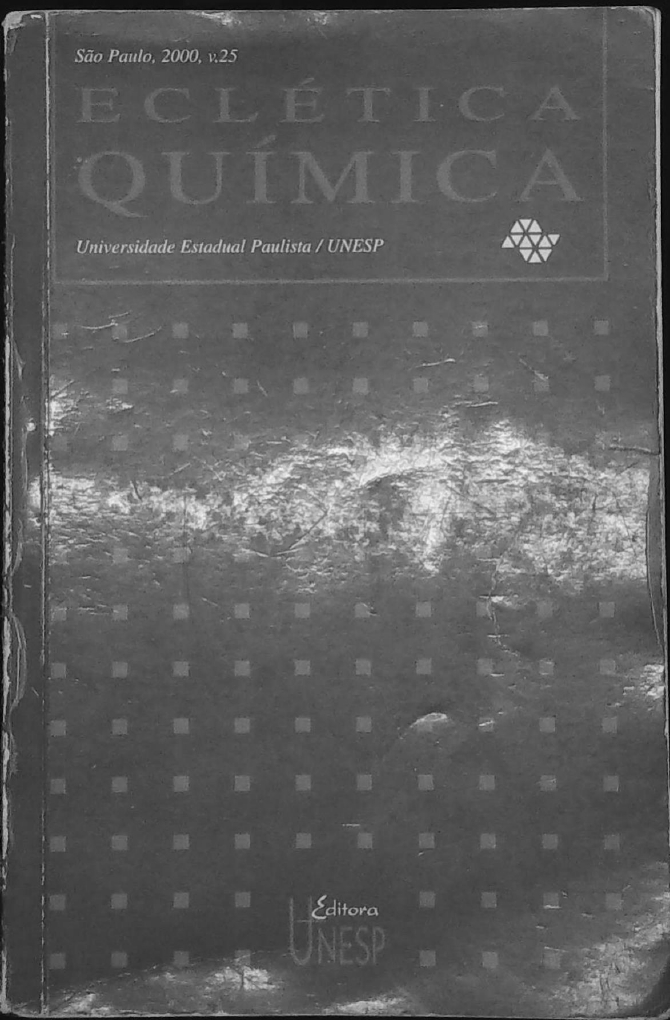Abstract
Solid dithizonates of Hg(I), Ag(I) and Bi(III) have been prepared. Thermogravimetry (TG), derivative thermogravimetry (DTG), differential scanning calorimetry (DSC), X ray diffraction powder patterns and elemental analysis have been used to characterize and to study the thermal stability and thermal decomposition of the dithizone and of these dithizonates.
References
Basset, J., Denney, R. C., Jeffery, G. H., Mendhan, J., Textbook of Quantitative Inorganic Analysis, fourth edition, Longman, London and New York, 1978. [ Links ]
Bryan, R. F., Knoff, P. M., The Crystal structure of primary cupric dithizonate. Proc. Chem. Soc. p. 203, 1961. [ Links ]
Chahud, M., Carvalho Filho, M. A. S., Fernandes, N. S., Zuanon Netto, J., Ionashiro, M. A Thermal analysis study of some transition - metal dithizonates, Thermochim. Acta, v. 322 p. 83 - 8, 1998. [ Links ]
Dyfverman, A., Infrared spectra of metal dithizonates. Acta Chem. Scand. v. 17 p. 1609-15, 1963. [ Links ]
Harding, M. M., The crystal structure of the mercury dithizone complex. J. Chem. Soc. p. 4136 - 43, 1958. [ Links ]
Laing, M., Sommerville, P., Crystal and molecular structure of primary nickel dithizonate. J. Chem. Soc. (A) p. 1247 - 51, 1971. [ Links ]
Mawby, A., Irving, H. M. N. H. The crystal structure of primary zinc (II) dithizonate and its relevance to the stabilities of its o - and p- methyl derivatives, Anal.Chim.Acta v. 55 p. 264 - 72,1971. [ Links ]
Pariaud, J.C. , Archinard., Preparation et analyse thermogravimetrique des dithizonates d' argent, de plomb, de zinc et de cuivre, Recueil, v.17 p.634- 8, 1952. [ Links ]

This work is licensed under a Creative Commons Attribution 4.0 International License.
Copyright (c) 2018 Eclética Química Journal




